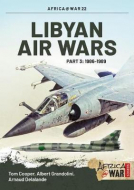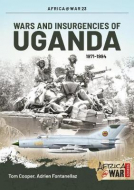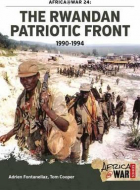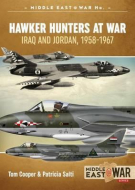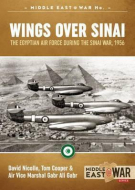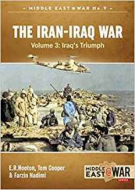
- Agriculture
- Architecture & Design
- Arts & Photography
- Biography
- Business
- Calendars and Diaries
- Childrens (All)
- Childrens (Illustrated)
- Childrens (Picture flats)
- Childrens (Te Reo)
- Classics
- Cooking, Food & Drink
- Craft & Hobbies
- Design (Art / Graphics)
- Design (Interiors)
- Education
- Fashion
- Fiction & Literature
- Fiction - Young Adult
- Gift Ideas
- Health & Wellbeing
- History
- Home & Garden
- Humour & Gift
- Instead of a Card Poems
- Military
- Music
- New Zealand
- NZ (History)
- NZ (Landscapes)
- NZ (Pictorial)
- Poetry
- Reference
- Religion & Faith
- Science & Nature
- Sport & Recreation
- Stationery
- Taschen : 40th Anniversary Edition
- Taschen : BA Basic Art
- Taschen : BU Bibliotheca Universalis
- Te Reo Māori
- Transport
- Travel
Tom Cooper (34)
|
Wings Over Ogaden (Africa@War 18)
ISBN: 9781909982383 Author: Tom Cooper Publisher: Helion & Company With Ethiopia in disarray following a period of severe internal unrest and the spread of insurgencies in Eritrea and Tigray, Ethiopia and its armed forces shoul... With Ethiopia in disarray following a period of severe internal unrest and the spread of insurgencies in Eritrea and Tigray, Ethiopia and its armed forces should have offered little opposition to well-equipped Somali armed forces which were unleashed to capture Ogaden, in July 1977. However, excellently trained pilots of the Ethiopian Air Force took full advantage of their US-made equipment, primarily their few brand-new Northrop F-5E Tiger II fighter-bombers, to take the fight to their opponents, win air superiority over the battlefield, and thus have their hands free to interdict the Somali supply links to stop the invasion cold. This air victory practically sealed the fate of the Somali juggernaut in Ogaden, especially so once Ethiopia convinced Cuba and the Soviet Bloc to support her instead of Somalia. In a fit of pique, Somalia forced all Soviet advisers to leave the country. Already bitter over similar experiences in Egypt in 1972, Moscow's revenge was designed as a clear message: nobody was to treat her in such fashion again. The USSR subsequently launched an air bridge to Ethiopia, unique and unprecedented in its extension and importance, delivering huge quantities of armament and equipment necessary for the Ethiopians to reconquer Ogaden, and beyond. In turn Somalia asked the USA for help and thus occurred an unprecedented switch of Cold War alliances. This volume details the history and training of both Ethiopian and Somali air forces, their equipment and training, tactics used and kills claimed, against the backdrop of the flow of the Ogaden war. It explains in detail, supported by over 100 contemporary and exclusive photographs, maps and color profiles, how the Ethiopian Air Force won the decisive victory in the air by expertly deploying the F-5Es - unequaled in maneuverability, small size and powerful armament - to practically destroy the Somali Air Force and its MiG-17s and MiG-21s. Bind: paperback Pages: 80 Dimensions: 210 x 300 mm Publication Date: 19-04-2015 |
$49.99 |
|
|
Libyan Air Wars Part 1 (Africa@War 19)
ISBN: 9781909982390 Author: Tom Cooper Publisher: Helion & Company Between 1973 and 1989, various Western powers and Libya were entangled in a seemingly never-ending exchange of blows. Supposedly launched in retaliation for one... Between 1973 and 1989, various Western powers and Libya were entangled in a seemingly never-ending exchange of blows. Supposedly launched in retaliation for one action or the other, this confrontation resulted in a number of high-profile, even though low-scale, clashes between the Libyan Arab Air Force (LAAF), the US Navy and even the French. Meanwhile, almost as a sideshow, the LAAF - quantitatively one of the most potent air forces in North Africa and the Middle East - also saw intensive deployment in Chad. Initially, with sporadic fighting between different parties for the control of N'Djamena, the Chadian capital, this conflict eventually turned into a major war when Libya invaded the country outright. The LAAF deployed not only French-made Mirage but also Soviet-made fighter-bombers of MiG and Sukhoi design, Mil-designed helicopters and even bombers of Tupolev design, to establish her dominance over the extensive battlefield of the Sahara Desert. Because of the Cold War but also due to confrontation with Libya over a number of other issues, France - a one-time major arms supplier to Libya - and the USA gradually got dragged into the war. Deployments of their troops and intelligence services in Chad, Egypt and the Sudan never resulted in a full-scale war against Libya, but time and again culminated in small-scale aerial operations that proved crucial to developments on the ground, several of which are still a matter of extensive debate. Detailing not only the aerial operations but the ground war and the geopolitical background of these conflicts, and illustrated with over 100 contemporary photographs, maps and all-new color profiles, this volume provides a unique insight into an otherwise completely forgotten conflict that raged from the skies over the southern Mediterranean to southern Chad and northern Sudan, yet one that not only represented a formative period of the LAAF, but which also prompted a number of crucial modifications and developments in France and the USA. Bind: paperback Pages: 80 Dimensions: 210 x 300 mm Publication Date: 12-05-2015 |
$49.99 |
|
|
Libyan Air Wars Part 2 (Africa@War 21)
ISBN: 9781910294536 Authors: Tom Cooper, Albert Grandolini Publisher: Helion & Company While the first volume in this mini-series spanned the first decade of confrontations between Libya and several of its neighbors, but foremost the USA and Franc... While the first volume in this mini-series spanned the first decade of confrontations between Libya and several of its neighbors, but foremost the USA and France, between 1973 and 1985, the second is to cover the period of less than a year - between mid-1985 and March 1986, when this confrontation reached its first climax. Through mid and late 1985, relations between France and Libya became tense over the situation in Chad. By early 1986, the French felt forced to deploy their air force for an airstrike on the crucial Libyan air base at Wadi Doum, in the north of that country. Tripoli reacted with a high-profile aerial attack on N'Djamena IAP and by bolstering support for its proxies. This eventually provoked Paris to launch its third military intervention in that country, Operation Épervier. Meanwhile, a series of terror attacks on US citizens and interests in Europe and the Mediterranean area took place. While most of these saw the involvement of Iran and Syria too, Libya was recognized as major supporter of the activities in question. In the aftermath of several traumatic experiences, the US administration began planning for direct action against the government in Tripoli and various terrorist organizations supported by it. As the Pentagon planners prepared a contingency list of targets in Libya, and the US Air Force began planning its involvement, ships and aircraft of the US Navy launched intensive operations off the Libyan coast with the aim of provoking an incident that could be used as a reason for major military attack on Libya. Eventually, these operations culminated in Operation Prairie Fire - a series of short but sharp clashes between the US Navy and Libyan air defenses and the Navy, in March 1986. Part 2 of this mini-series provides an unprecedentedly detailed and richly illustrated description of the involved air forces, their equipment and markings, and related military aerial operations, many of which have remained unknown until today, while others have been forgotten outright. Bind: paperback Pages: 72 Dimensions: 210 x 300 mm Publication Date: 11-04-2016 |
$49.99 |
|
|
Libyan Air Wars Part 3 (Africa@War 22)
ISBN: 9781910294543 Authors: Tom Cooper, Albert Grandolini Publisher: Helion & Company Confrontations between Libya, and the USA and France reached their highest point in the period between April 1986 and early 1989. In response to a Libyan-instig... Confrontations between Libya, and the USA and France reached their highest point in the period between April 1986 and early 1989. In response to a Libyan-instigated and supported series of terror attacks against US citizens and interests in Europe, in April 1986 the USA launched Operation El Dorado Canoyon - a series of raids against carefully selected targets in Libya. Simultaneously, the USA and France bolstered the military of the Chadian government, enabling it to subsequently launch an all-out advance against Libyan troops and proxy forces in the north of Libya. This culminated in the series of spectacular campaigns better known as 'Toyota Wars', characterized by high speed of operations and surprise. The Chadian Army defeated its opponents in 1987 and nearly launched an invasion of Libya in 1988, successfully concluding this conflict. This title closes the Libyan Air Wars mini-series with a detailed insight into the final US-Libyan confrontation, which took place in early 1989, and culminated in another high-profile air combat between the most modern jet fighters of the Libyan Arab Air Force, and the US Navy. As usual, the volume is richly illustrated by well over 150 contemporary and exclusive photographs, color profiles, and maps, detailing the history, training, equipment, markings and tactics of the involved air forces. Bind: paperback Pages: 72 Dimensions: 210 x 300 mm Publication Date: 05-08-2016 |
$49.99 |
|

|
Wars and Insurgencies of Uganda (Africa@War 23)
ISBN: 9781910294550 Authors: Tom Cooper, Adrien Fontanellaz Publisher: Helion & Company In 1971, Idi Amin Dada, a former officer of the King's African Rifles and commander of the Ugandan Army, seized power in a military coup in Uganda. Characterize... In 1971, Idi Amin Dada, a former officer of the King's African Rifles and commander of the Ugandan Army, seized power in a military coup in Uganda. Characterized by human rights abuses, political repression, ethnic persecution, extra judicial killings, nepotism, corruption and gross economic mismanagement, Amin's rule drove thousands into exile. Amin shifted the country's orientation in international relations from alliances with the West and Israel, to cooperation with the Soviet Union. With Tanzanian leader Julius Nyerere offering sanctuary to Uganda's ousted president, Milton Obote, Ugandan relations with Tanzania soon became strained too. Already in 1972, a group of Tanzania-based exiles attempted, unsuccessfully, to invade Uganda and remove Amin. By late 1978, following another attempted coup against him, Amin deployed his troops against the mutineers, some of whom fled across the Tanzanian border. The rebellion against him thus spilled over into Tanzania, against whom Uganda then declared a state of war. Opening with an overview of the ascent of crucial military and political figures, and the buildup of the Tanzanian and Ugandan militaries during the 1960s and 1970s, this volume provides an in-depth study of the related political and military events, but foremost of military operations during the Kagera War - also known as 'A Just War' - fought between Tanzania and Uganda in 1978-1979. It further traces the almost continuous armed conflict in Uganda of 1981-1994, which became renowned for emergence of several insurgent movements notorious for incredible violence against civilian population, some of which remain active in central Africa to this day. This book is illustrated with an extensive selection of photographs, color profiles, and maps, describing the equipment, markings, and tactics of the involved military forces. Bind: paperback Pages: 72 Dimensions: 210 x 300 mm Publication Date: 20-01-2016 |
$49.99 |
|
Wars and Insurgencies of Uganda (Africa@War 23)
ISBN: 9781910294550 Authors: Tom Cooper, Adrien Fontanellaz Publisher: Helion & Company In 1971, Idi Amin Dada, a former officer of the King's African Rifles and commander of the Ugandan Army, seized power in a military coup in Uganda. Characterize... In 1971, Idi Amin Dada, a former officer of the King's African Rifles and commander of the Ugandan Army, seized power in a military coup in Uganda. Characterized by human rights abuses, political repression, ethnic persecution, extra judicial killings, nepotism, corruption and gross economic mismanagement, Amin's rule drove thousands into exile. Amin shifted the country's orientation in international relations from alliances with the West and Israel, to cooperation with the Soviet Union. With Tanzanian leader Julius Nyerere offering sanctuary to Uganda's ousted president, Milton Obote, Ugandan relations with Tanzania soon became strained too. Already in 1972, a group of Tanzania-based exiles attempted, unsuccessfully, to invade Uganda and remove Amin. By late 1978, following another attempted coup against him, Amin deployed his troops against the mutineers, some of whom fled across the Tanzanian border. The rebellion against him thus spilled over into Tanzania, against whom Uganda then declared a state of war. Opening with an overview of the ascent of crucial military and political figures, and the buildup of the Tanzanian and Ugandan militaries during the 1960s and 1970s, this volume provides an in-depth study of the related political and military events, but foremost of military operations during the Kagera War - also known as 'A Just War' - fought between Tanzania and Uganda in 1978-1979. It further traces the almost continuous armed conflict in Uganda of 1981-1994, which became renowned for emergence of several insurgent movements notorious for incredible violence against civilian population, some of which remain active in central Africa to this day. This book is illustrated with an extensive selection of photographs, color profiles, and maps, describing the equipment, markings, and tactics of the involved military forces. Bind: paperback Pages: 72 Dimensions: 210 x 300 mm Publication Date: 20-01-2016 |
$49.99 |
|
|
The Rwandan Patriotic Front (Africa@War 24)
ISBN: 9781910294567 Authors: Tom Cooper, Adrien Fontanellaz Publisher: Helion & Company On 1 October 1990, hundreds of Banyarawanda militants that served with the Ugandan Army deserted their posts to form the Rwandan Patriotic Front (RPF) and invad... On 1 October 1990, hundreds of Banyarawanda militants that served with the Ugandan Army deserted their posts to form the Rwandan Patriotic Front (RPF) and invade Rwanda. Thus began the Rwandan Civil War, which was to culminate in the famous genocide of nearly one million of Tutsi and moderate Hutus, in 1994. Starting with in-depth descriptions of the history of Rwandan political, military and security development, this volume traces the history of the RPA from its emergence as a small-scale insurgent group formed from the ranks of Rwandan refugee diaspora in Uganda; its military operations and related experiences during nearly four years of war against the Rwandan government; and its establishment of control over Kigali, in July 1994. As such, the narrative presented here provides a fascinating and unique insight into the military story behind the emergence of modern-day Rwanda and its military; considered by many to be the 'Israel of Africa'. Providing minute details about RPF's tactics and doctrine - that strongly influenced developments in a number of other modern-day African wars - this volume is foremost an offering that provides highly interesting backgrounds for and a prequel to, nearly all of the subsequent wars in the neighboring Democratic Republic of the Congo. Illustrated with over 150 photographs, color profiles, and maps describing the equipment, colors, and markings, and tactics of the RPF and its opponents, this is a unique study about the emergence of one of the most important US allies on the African continent. Bind: paperback Pages: 72 Dimensions: 210 x 300 mm Publication Date: 10-12-2016 |
$49.99 |
|
|
Hawker Hunters at War (Middle East@War 7)
ISBN: 9781911096252 Authors: Tom Cooper, Patricia Salti Publisher: Helion & Company Designed by Sydney Camm as a swept wing, daytime interceptor with excellent maneuverability, the Hunter became the first jet aircraft manufactured by Hawker for... Designed by Sydney Camm as a swept wing, daytime interceptor with excellent maneuverability, the Hunter became the first jet aircraft manufactured by Hawker for the Royal Air Force. It set numerous aviation records and saw widespread service with a large number of RAF units in Europe and abroad. When the Royal Air Force received newer aircraft capable of supersonic speeds to perform the interceptor duties, many Hunters were modified and re-equipped for ground-attack and reconnaissance missions instead. Because they were deemed surplus to British requirements, most of these were subsequently refurbished and exported to foreign customers - so also to Iraq and Jordan. Hawker Hunters at War covers every aspect of Hunter's service in the two countries, from in-depth coverage of negotiations related to their export to Iraq and Jordan, to all-important details of their operational service during 1958-67. It culminates in detailed examination of their role in the June 1967 Arab-Israeli War (also known as the 'Six Days War') and extensive tables listing all aircraft delivered and their fates. Almost entirely based on interviews with retired commanding officers and pilots of the former Royal Iraqi Air Force, Iraqi Air Force and Royal Jordanian Air Force - as well as plenty of unpublished official documents from British, Iraqi and Jordanian archives - the narrative is providing an unprecedented insight into a number of contemporary affairs. Profusely illustrated with well over 100 photographs and 15 color profiles showing all aspects of camouflage, markings and various equipment, Hawker Hunters at War is the ultimate profile of Hunter's colorful and action-packed service in Iraq and Jordan during a period when this legendary type formed the backbone of local air forces. Bind: paperback Pages: 72 Dimensions: 210 x 300 mm Publication Date: 22-02-2017 |
$49.99 |
|
|
Wings over Sinai Middle East@War 8
ISBN: 9781911096610 Authors: David Nicolle, Tom Cooper, Air Vice Marshal Gabr Ali Gabr Publisher: Helion & Company Sixty years since the tripartite aggression of France, Great Britain and Israel against Egypt, this is the first account about Egyptian military operations duri... Sixty years since the tripartite aggression of France, Great Britain and Israel against Egypt, this is the first account about Egyptian military operations during the Suez War of 1956 (or 'Suez Crisis', as it is known in the West). Based on research with the help of official Egyptian documentation and recollections of crucial participants, this book provides an unique and exclusive insight into the 'other side' of a war that many consider has marked 'the end of the British Empire'. From the Western point of view, the situation is usually explained in quite simple terms: in retaliation for President Gamal Abdel Nasser's nationalization of the Universal Suez Canal Company - and thus the strategically important waterway of the Suez Canal - France and Great Britain (operating in concert with Israel) launched the operation codenamed 'Musketeer'. Divided into three phases, each shaded into the other; this aimed at obliterating the Egyptian Air Force, occupying the whole of the Suez Canal and toppling Nasser's government. From the Egyptian point of view, backgrounds were much more complex than this. Striving to modernize the country, a new and inexperienced government in Cairo launched a number of major projects, including one for the construction of a gigantic Asswan Dam on the Nile. The only Western power ready to help finance this project, the USA conditioned its support with basing rights for its military. With the last British soldiers still about to leave the country - and thus end Egypt's occupation by foreign powers for the first time in 2,000 years - Nasser found this unacceptable. Around the same time, Egypt found itself under pressure from Israeli raids against border posts on the Sinai. Left without a solution, Cairo decided to nationalize the Suez Canal in order to finance the Aswan Dam project, but also to start purchasing arms from the Soviet Union. In an attempt to bolster Egyptian defenses without antagonizing Western powers, Nasser concluded the so-called 'Czech Arms deal' with Moscow - resulting in the acquisition of Soviet arms via Czechoslovakia. Little known in Cairo at the time, such moves tripped several 'red lines' in Israel and in the West - in turn prompting aggression that culminated in a war. Wings over Sinai is, first and foremost, an account of the battle for survival of the Egyptian Air Force (EAF). Caught in the middle of conversion to Soviet-types, this proved more than a match for Israel, but were hopelessly ill-prepared to face the military might of Great Britain and France too. Sustained, days-long air strikes on Egyptian air bases caused heavy damage, but were nowhere near as crippling as the losses usually claimed and assessed by the British, French and Israelis. The EAF not only survived that conflict in quite a good order, but also quickly recovered. This story is told against the backdrop of the fighting on the ground and the air and naval invasion by British and French forces. Richly illustrated with plenty of new and previously unpublished photographs, maps (and 15 color profiles), this action-packed volume is illustrates all aspects of camouflage, markings and various equipment of British and Soviet origin in Egyptian military service as of 1956. Bind: paperback Pages: 112 Dimensions: 210 x 300 mm Publication Date: 04-05-2017 |
$49.99 |
|
|
The Iran-Iraq War Volume 3 (Middle East@War 9)
ISBN: 9781911512448 Authors: Tom Cooper, E R Hooton, Farzin Nadimi Publisher: Helion & Company The Iran-Iraq War was one of the bloodiest conflicts of the 20th Century and accidentally created the current nightmare of Islamic fundamentalist terrorism. The... The Iran-Iraq War was one of the bloodiest conflicts of the 20th Century and accidentally created the current nightmare of Islamic fundamentalist terrorism. There have been many books on the conflict but this is the first detailed military history using materials from both sides, as well as materials obtained from US Intelligence circles and British Governmental archives. It provides a unique insight into a war which began through miscalculation and rapidly escalated into the longest conventional conflict in the post-Second World War era. The third volume covers the last two years of the war on the Southern front, where Iranians made their last supreme effort to break through Iraqi lines during the winter of 1986-1987. Iraqi defences just about held. For a year, there was an ominous silence, but then Iraq launched a series of devastating blows that recovered the Faw Peninsula, pulverised weakly-occupied Iranian positions, and drove the frontlines back to the international border. Iran was left with no option but to sue for peace. Bind: paperback Pages: 80 Dimensions: 210 x 300 mm Publication Date: 05-04-2018 |
$55.00 |





